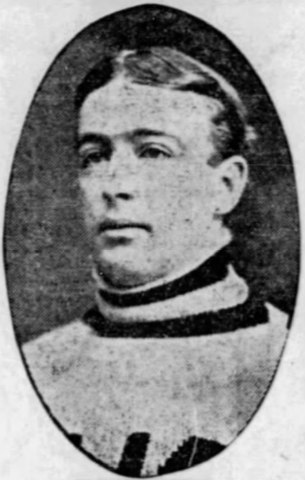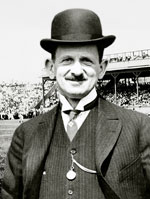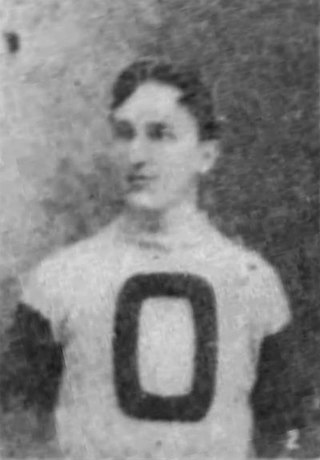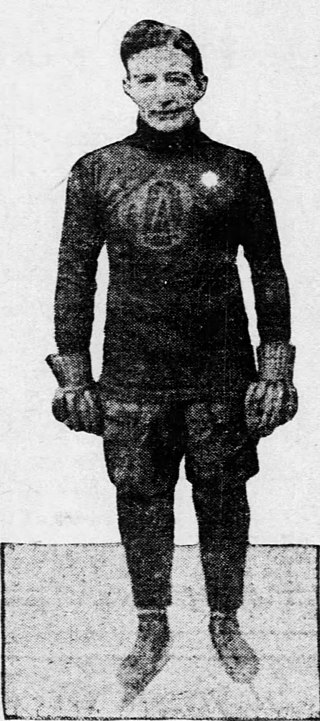
The Duquesne Gardens was the main sports arena located in Pittsburgh, Pennsylvania, during the first half of the 20th century. Built in 1890, the building originally served as a trolley barn, before becoming a multi-purpose arena. The Gardens opened three years after a fire destroyed the city's prior sports arena, the Schenley Park Casino, in 1896. Over the years, the Gardens was the home arena of several of Pittsburgh's historic sports teams, such as ice hockey's Pittsburgh Pirates and Pittsburgh Hornets. The Western Pennsylvania Hockey League, which was the first ice hockey league to openly hire and trade players, played all of its games at the Gardens. The arena was also the first hockey rink to ever use glass above the dasher boards. Developed locally by the Pittsburgh Plate Glass Company, Herculite glass was first tested in Pittsburgh. Most rinks were using wire mesh before the shatterproof glass was invented. Finally, the Pittsburgh Ironmen, a charter member of the Basketball Association of America, played at the Gardens from 1946 to 1947.

Albert Daniel "Dubbie" Kerr was a Canadian professional ice hockey player. He was a member of the 1909 and 1911 Ottawa Senators Stanley Cup-winning teams. Born in Brockville, Ontario, he started out as a professional with the Pittsburgh Lyceum and Pittsburgh Athletic Club in 1907 before returning to Canada with the Toronto Pros in 1908. He played with the Senators from 1909 until 1912. In 1913, he moved out west to play in the Pacific Coast Hockey Association until 1920 for the Victoria Aristocrats.

The Pittsburgh Shamrocks were a professional ice hockey team, based in Pittsburgh, Pennsylvania that played in the International Hockey League in 1935–36. The team played all of its home games at Duquesne Garden. During their lone season in existence, the Shamrocks finished in fourth place in the West Division behind the Detroit Olympics, Cleveland Falcons, and Windsor Bulldogs. The Shamrocks scored 137 goals and allowed 170. The team folded after one season. It is estimated that the team lost $36,000 during 1935–36 season.

Henry James Smith was a Canadian professional ice hockey player who played 98 games in various professional and amateur leagues, including the National Hockey Association and Eastern Canada Amateur Hockey Association. Among the teams he played with were the Cobalt Silver Kings, Toronto Tecumsehs, Ottawa Senators, and Montreal Wanderers. He was a member of the famous "Ottawa Silver Seven" from 1905 to 1907. His brothers Alf and Tommy also played ice hockey.
The Western Pennsylvania Hockey League (WPHL) was an originally amateur and later professional ice hockey league founded in 1896 and existing through 1909. Based in Pittsburgh, Pennsylvania, the league became the pre-eminent ice hockey league in the United States. It was the first league to openly hire and trade players.
The Pittsburgh Keystones were a semi-professional ice hockey club, located in Pittsburgh, Pennsylvania and was a member of the Western Pennsylvania Hockey League, the first league to openly hire hockey players, from 1900–1904. The team played all of its games at the Duquesne Garden, and was involved in allowing Harry Peel become the first admitted professional hockey player in 1902.
The 1907–08 WPHL season was the eighth season of operation for the Western Pennsylvania Hockey League (WPHL) and the first since the league went dormant in 1904. In the intervening three seasons, a team representing Pittsburgh competed in the International Professional Hockey League (IPHL). Four Pittsburgh-area teams made up the revived WPHL, in which all games were played at the Duquesne Gardens. Old WPHL teams Pittsburgh Athletic Club and the Pittsburgh Bankers resumed play in the league. Two teams were added to the league, the Pittsburgh Pirates and a team representing the Pittsburgh Lyceum.
The 1908–09 WPHL season was the ninth and final season of operation for the Western Pennsylvania Hockey League. Four Pittsburgh-area teams competed in the season, in which all games were played at the Duquesne Gardens.
The Pittsburgh Bankers were one of the earliest professional ice hockey clubs. The club was based in Pittsburgh, Pennsylvania and was a member of the Western Pennsylvania Hockey League, the first league to openly hire hockey players, from 1899–1904 and 1907–1909. The team played all of its games at Duquesne Garden, and was involved in the first known trade of professional hockey players.

The Pittsburgh Pirates were an early professional ice hockey club based in Pittsburgh, Pennsylvania and were members of the Western Pennsylvania Hockey League for the 1908 WPHL season. The team, and the league, played all of their games at Duquesne Garden. The Pirates made one of the first known trades of professional hockey players.
The Pittsburgh Athletic Club (PAC) was one of the earliest professional ice hockey teams. It was based in Pittsburgh, Pennsylvania from around 1895 until 1904 and again from 1907 to 1909.
The Pittsburgh Victorias were one of the earliest professional ice hockey teams. The club was based in Pittsburgh, Pennsylvania, and were members of the Western Pennsylvania Hockey League, the first league to openly hire hockey players, from 1902–1904. The team folded in 1904, when the WPHL disbanded its teams to form the Pittsburgh Professionals and compete in the International Professional Hockey League.
The Duquesne Country and Athletic Club ice hockey team was a member of the Western Pennsylvania Hockey League (WPHL) from 1896 to 1901. The team was based in Pittsburgh, Pennsylvania.

Arthur Egerton Sixsmith was a Canadian professional ice hockey rover and businessman. He played for the Ottawa Hockey Club and later moved to Pittsburgh to play professionally. He was a member of the Ottawa's 1901 CAHL championship team. As one of the first professional ice hockey players, he captained and managed several of the championship teams in the Western Pennsylvania Hockey League (WPHL). His brother, Garnet Sixsmith, also played professionally in Pittsburgh.

The Pittsburgh Lyceum was an American football team that was based in Pittsburgh, Pennsylvania from about 1899 to 1910.
The Pittsburgh Professional Hockey Club, also referred to as the Pittsburgh Professionals and Pittsburgh Pros, were a professional ice hockey team that participated in the International Professional Hockey League (IPHL) from 1904 until 1907. The team was based in the Duquesne Garden and was the first inter-city professional hockey team in the city of Pittsburgh, Pennsylvania. The Pros' line-ups included several important early professional hockey players, the most notable being Hod Stuart, who was considered, in certain hockey circles, to be the "greatest hockey player in the world."

Garnet Mosgrove Sixsmith was a Canadian professional ice hockey player. One of the first professional ice hockey players, he played professionally in Pittsburgh, Pennsylvania from 1902 until 1910. His brother Arthur Sixsmith also played professional ice hockey.
The Pittsburgh Winter Garden hockey team was an amateur ice hockey team based in Pittsburgh, Pennsylvania. The team received its name from its home arena, the Winter Garden at Exposition Hall, and played only four games, winning one and losing three, in its only season of 1915–16. The Winter Garden team was managed and coached by Arthur Sixsmith and consisted of several players from the defunct Western Pennsylvania Hockey League (WPHL), which was the first openly professional hockey league. Despite the fact that former professional players were on the team, the club remained strictly amateur. Lorne Campbell and Arthur's brother, Garnet Sixsmith, played on the Winter Garden team and were both alumni of the WPHL.

Alfred Ernest 'Cap' McDonald was a Canadian professional ice hockey player who played from 1895 to 1914. In 1912–13, he was the captain and coach of the Sydney Millionaires when they played against the Quebec Bulldogs for the Stanley Cup in 1913.

The Duquesne Athletic Club was a professional ice hockey team based in Pittsburgh, Pennsylvania that played for only one season in 1908–1909. It won the final championship of the Western Pennsylvania Hockey League (WPHL).









